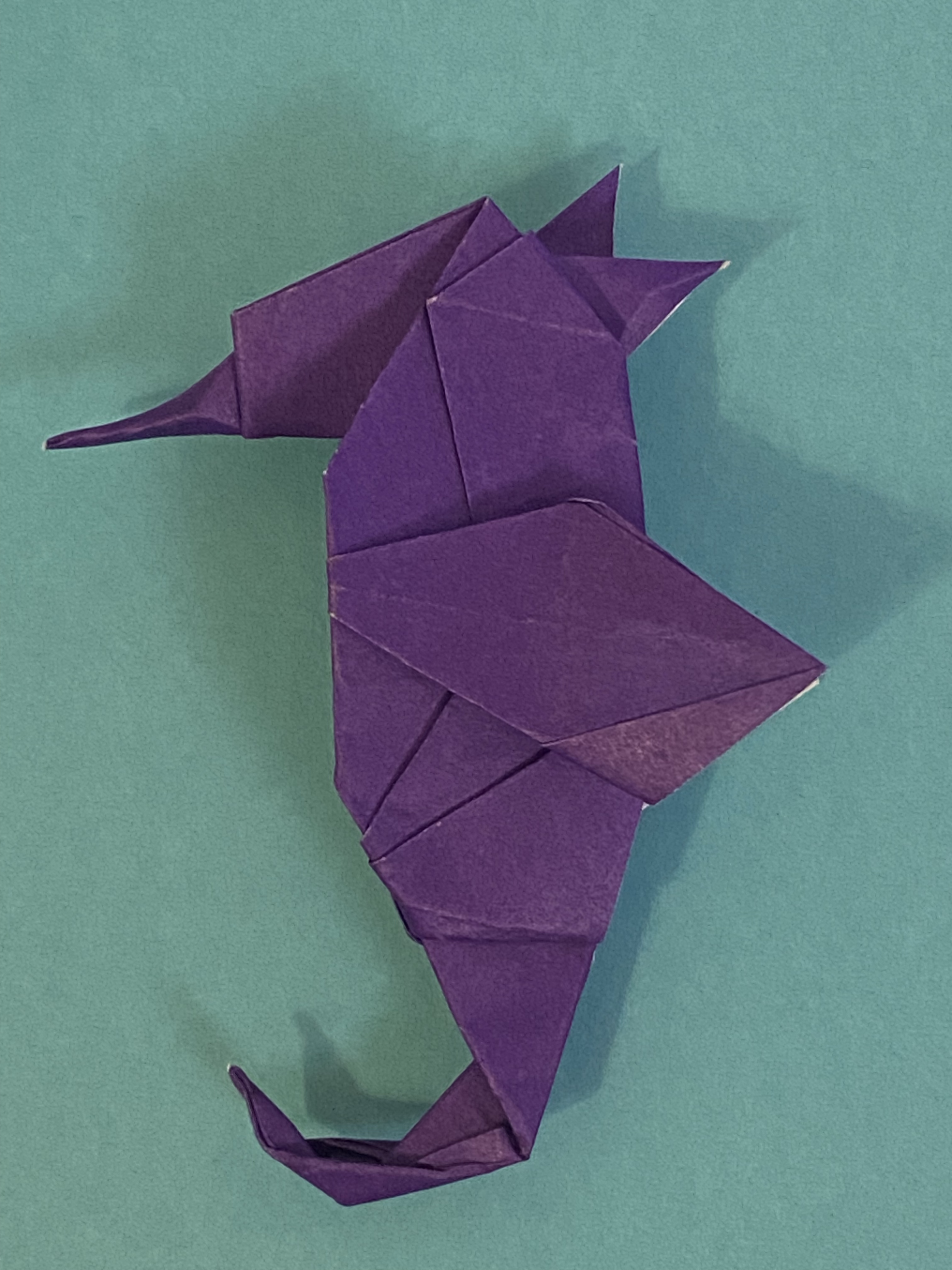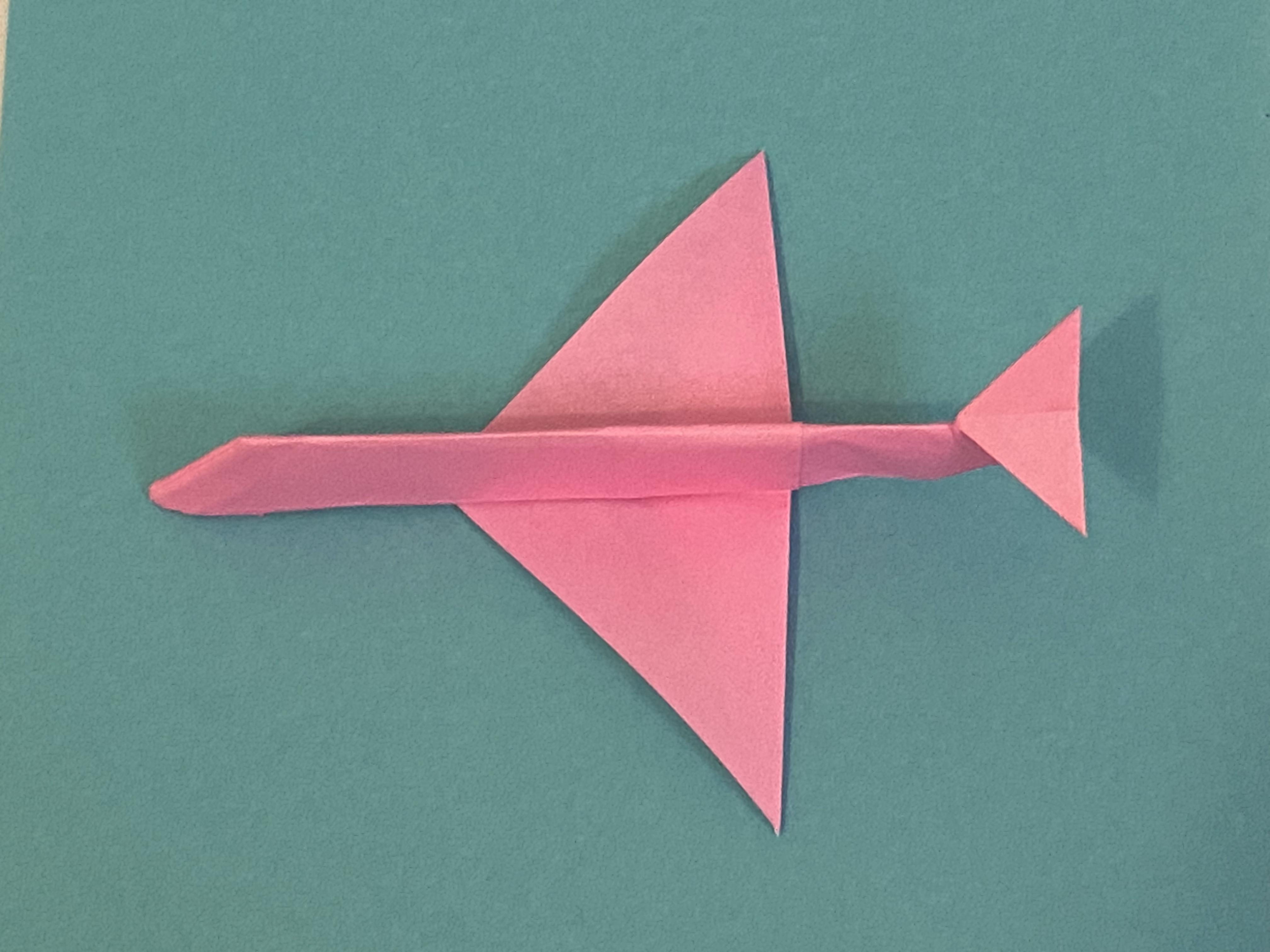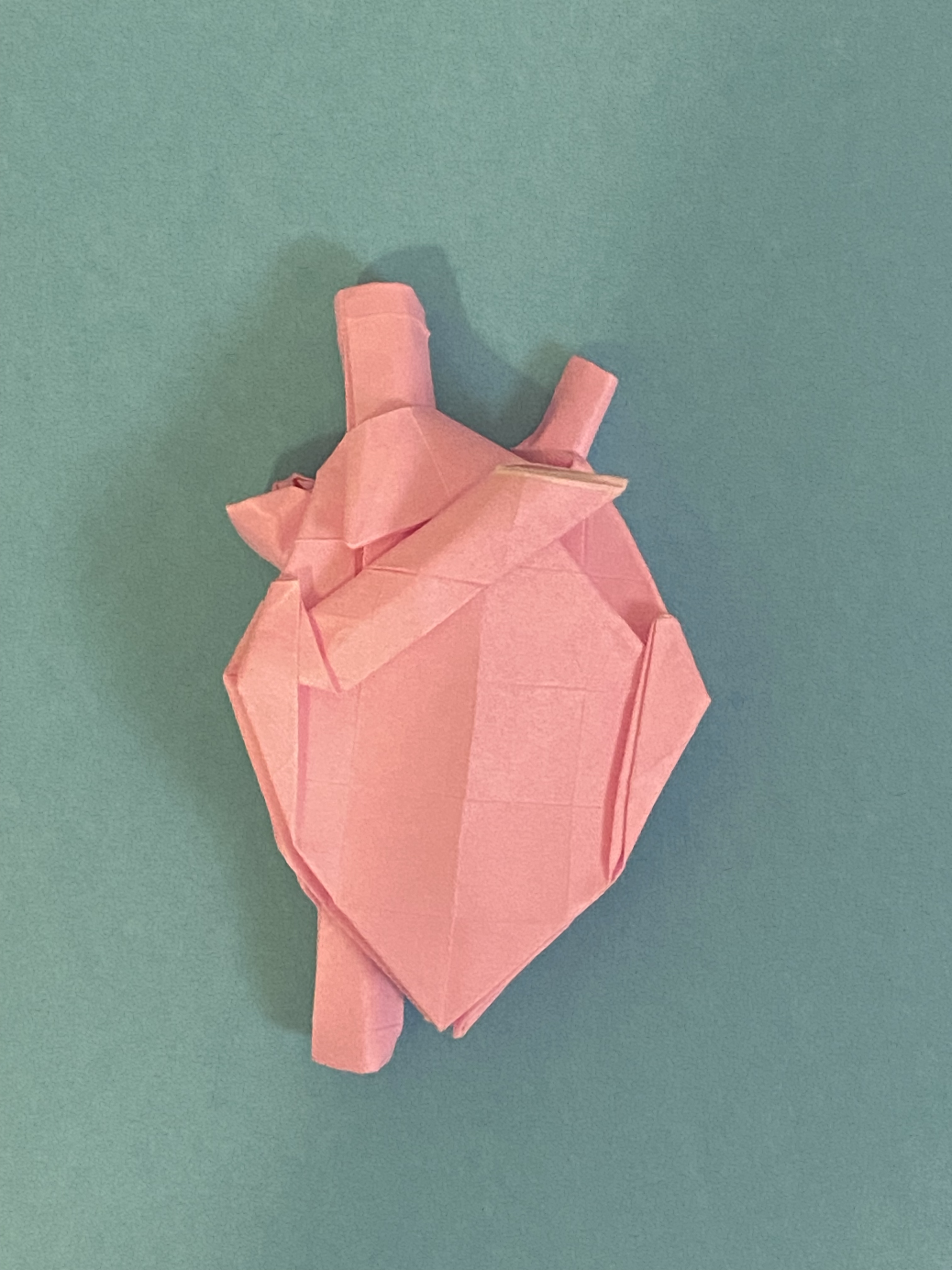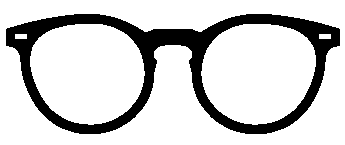Learning origami is a strange process. Unlike other forms of visual art, many origami artists will never create a piece without following explicit sets of instructions. In fact, you can become an exceptional origamist without ever designing a single piece yourself. In many ways, origami parallels music, in which great musicians don’t need to be composers, but through their technical mastery and musicality, they can create beauty from the notes on the page. Origamists do the same, combining precise control of the paper with tactfully applied sculpting techniques to create art. The ability to design origami is neither necessary nor sufficient to be a great origamist.
I mostly design for fun, though there are a few practical benefits. Designing origami can help you connect with other art forms. So many visual artists learn to study anatomy and draw from references, and I did much of the same when designing this seahorse. As I iterated through different approaches, I had my computer open with pictures of seahorses in various poses to better understand the most important features of a seahorse. While I like to think I studied my references well, I took some artistic liberties in my design. First, in my mind, seahorses are rather regal, so when approaching the coronet of the seahorse, I gave it two spikes instead of one lump. This way, the coronet looks a bit more like a crown. Technically, a coronet is already a crown, just for a lesser position, and I wanted a higher-ranking crown for my design. Second, I turned the large dorsal fin into two pectoral fins. This was a massive departure from actual seahorse anatomy, but for people who haven’t looked at many pictures of seahorses, they expect pectoral fins, and this was my attempt at combining perception with reality.

I didn’t use any references when I designed a plane, but I did have some anti-references. I had paper planes—the kind you throw—sitting in front of me so I knew what not to make. Obviously, this is a plane made of paper, but it is not a paper plane. It doesn’t look like one of those planes you can throw that flies; it looks like an actual, commercial airplane. I tried making the end result look as simple as possible, but in doing so, I spent lots of time grappling with the unfortunate reality of origami: paper is thick. As you continue to fold paper, the thickness accumulates, making it harder to continue without causing the paper to shift in ways you never intended. The body of this plane has one segment that is incredibly thick, but using some techniques to counteract this, I was able to manage the thickness without greatly impacting the rest of the model.

Designing a heart was a rather strange undertaking. Every Valentine’s Day, someone always makes a comment about folding an anatomical heart, but no one I know ever tries to fold one. I’ve tried folding a heart before, though it looked more like a blob. This Valentine’s Day, I tried again, this time focusing on getting more tubes in the right place. From the vena cava to the pulmonary vein, it’s a decent attempt. This is actually my first draft; I didn’t have time to make multiple. I do have a few nitpicks for my next attempt. First, I had enough paper to add more features, I was just a bit reserved, but next time I should add more tubes. Second, I spend a lot of effort on an aortic arch that is just too low to see, so I’ll revisit that next time. That being said, it is much better than my first attempt a few years ago, and I’m still quite pleased with how it turned out.

To be clear, not all of my design attempts work this well. For example, I also tried designing an Oreo, but it looks more like an exploding macaron right now. I still have a ways to go before I start designing technically advanced origami, but these past few months have been good. I have the benefit of a community of folders around me, but that need not be the case. Ultimately, I just needed to get back into designing origami. My recent exhibit also helped me realize that. I don’t know how many more inspiring opportunities I’ll have, but I do hope I keep designing. Maybe in a few months, I’ll have better designs; maybe I’ll have nothing. Either way, I’ll still be folding.
